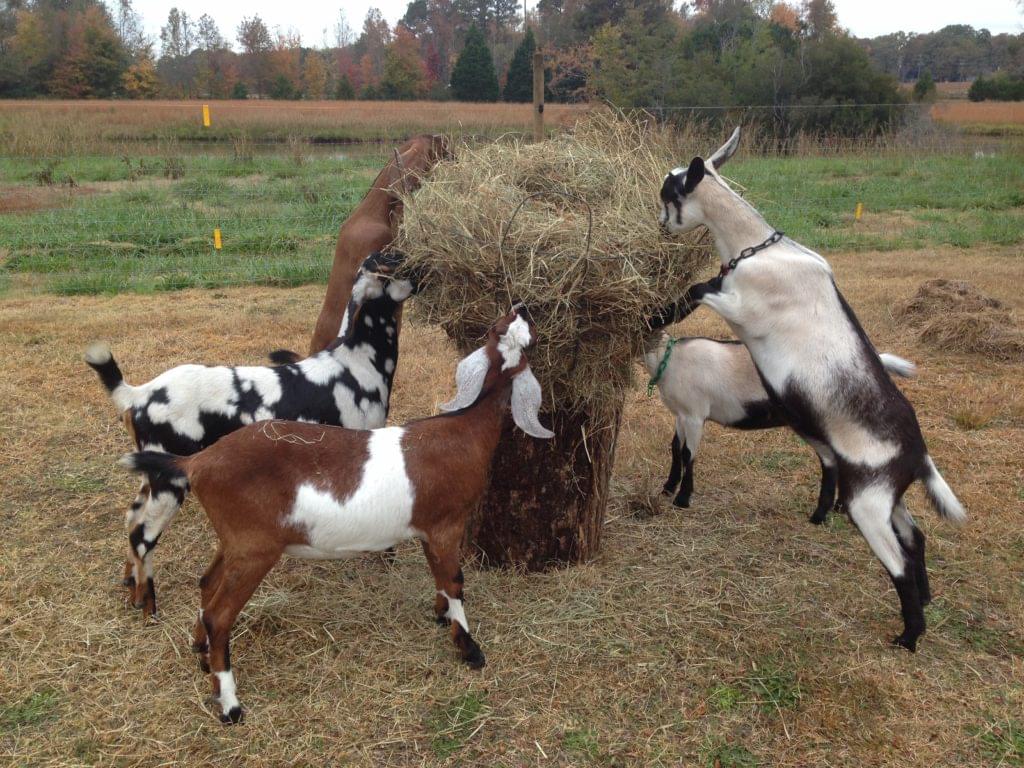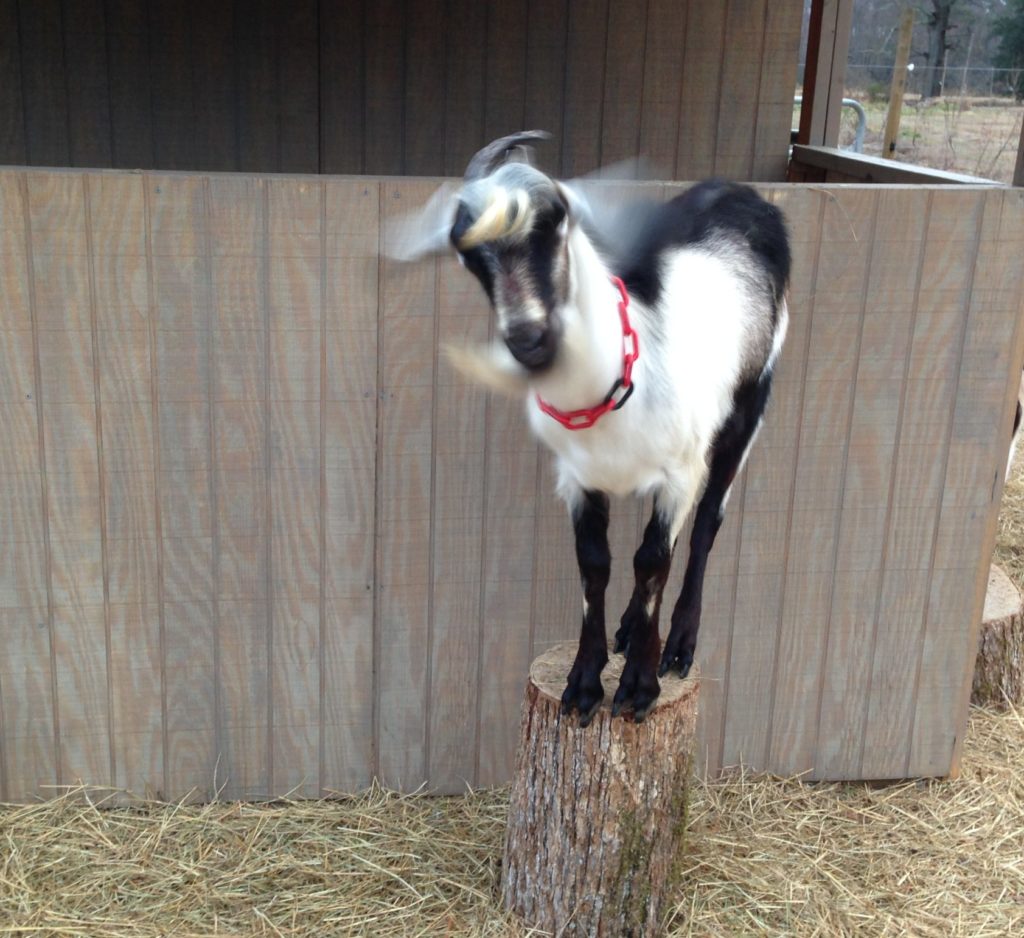The original post below was published two years ago, just after we borrowed the first buck that bred our first batch of goats. Egbert sired a total of seven kids that first year – six bucks and one doe. That one doe is Misty’s daughter and still here on the farm, now bred for the first time. The bucks were whether and sold to an intermediary for future sale to market. The second year, we borrowed a Nubian buck – Sunny. Sunny provided us with nine kids, five bucks and four does. Misty’s two bucks were so gorgeous that I decided to show them in the NCDGBA (North Carolina Dairy Goat Breeders Association) Spring show. They came in second and third place…out of three. The bucks were sold intact, again to the intermediary for future sale.
We are now in year three. Nathaniel, a Nubian buck, has bred five does: Leah, Misty, Hazel, Georgia, and Lila. And Flash is working on the little girls from last year: Ava, Bailey, Brandy, and Cinnamon.
Confused? Well, the point of the story is that we (I) have gotten over the initial trepidation of getting our does bred.
Here’s the original post:
Much deliberation (mostly with myself) has occurred over that last few weeks on how best to go about breeding our darling little goats:
- Should I wait another year to give us time to set up for kidding and milking?
- Were the goats old enough to be bred?
- How would I know if/when they were in heat?
- How would I get them to a buck?
First of all, wait a whole year? “Are you crazy?” Robert said. He didn’t say it like that, but he did remind me of our goal to make soap and cheese and to have our own milk for drinking. If we wait a year to breed our goats, the soonest we could hope to have milk would be May 2016.
As for whether our goats were old enough to be bred, not according to the vet who had strongly recommended that they be at least a year old. The breeders, on the other hand, were adamant that weight was the determining factor, not age, and leaving a goat un-bred for too long would just cause problems down the road (excessive fat makes the kidding process difficult). So I consulted the magic weight tape (a tape measure that converts inches into pounds) and lo and behold, all five meet the 80-85 pound minimum.
The question of being in heat proved to be the most difficult question. The tell-tale signs of flagging, rubbing on a buck-scented rag, and swelling of the, uh, private parts, were not obvious to me. Our county’s livestock extension agent suggested that the does might be more likely to come into heat in the presence of a buck. That made a lot of sense to me, but the plan had been to take the does to the buck once I knew they were in heat.
On to Plan B. I called our Apline breeder and she offered to let us borrow one of her bucks. Now we were finally getting somewhere. So off I went, loaded Egbert into the car and brought him back to our place. That was Friday afternoon. It’s now Monday morning, and I am thrilled to report having witnessed distinct flagging by Misty. More importantly, she was standing still and allowing Egbert to mount her. Whoo-hoo! I’m marking today on the calendar with a due date 150 days for now – May 15, 2015. If the breeding wasn’t completed this morning, I am pretty confident it will happen sometime today. One down and four more to go.


